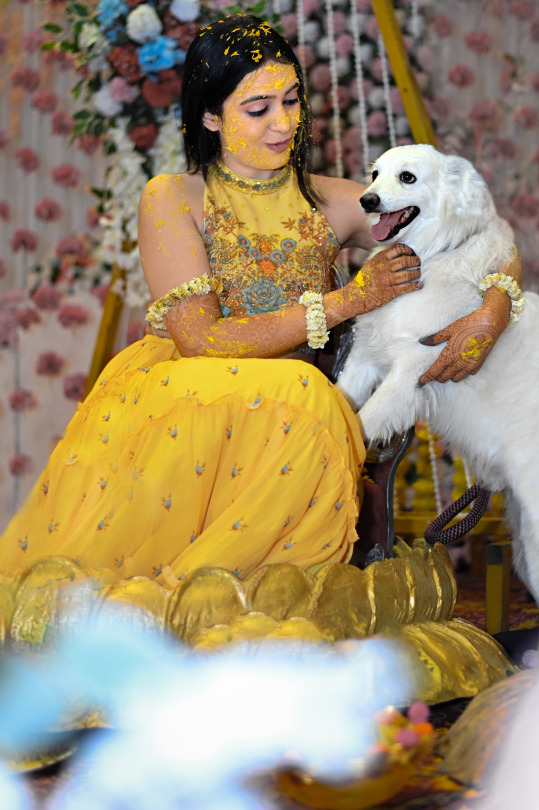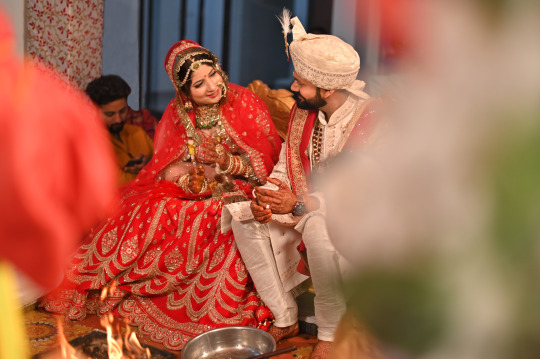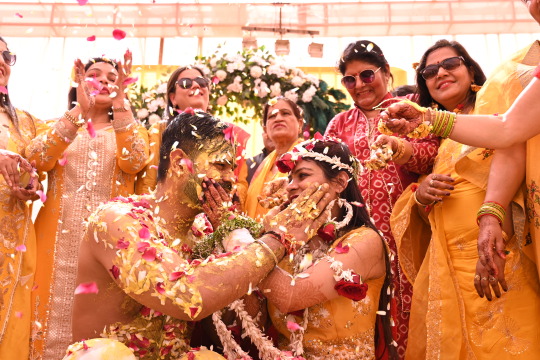#hotographer
Text

Study
Cambridge, Massachusetts -- 1/2/16
#fotografía#fotografía original#original photography#p;hotographers on tumblr#artists on tumblr#photography#cambridge public library#reflection#reflejo
96 notes
·
View notes
Photo

#8780
Copyright © Takeuchi Itsuka. All Rights Reserved.
#film#filmphotography#photography#streetphotography#35mm#streetphotographyjapan#hotographer on tumblr#dreamermagazine#impression_shots#cityscape#electricalwire#alley#backstreet#streetscene#citylights#evening#signboard#kodak#portara#portara800
117 notes
·
View notes
Text

Singing a lullaby of obliteration.
#original photograpy#original photographers#hotographers on tumblr#artists on tumblr#realityinflicted#photography
19 notes
·
View notes
Text
@chameleoniism said: MEDIC // for Ruin!
at some point, ruin has learned to not think too much of finding random people — often times teenagers, for whatever reason — at his doorstep. like moths to a flame, one stray kid here or there is bound to find theirself either waiting for him at his door or even inside his house. at this point, he thinks very little of his strange it is for such things to happen to him. and so, ruin barely even blinks at wounded stranger ( perhaps an acquaintance he cannot remember at the moment ).
“ what happened to you? ” he asks after noticing the injury, attention shifting from face to give her a quick scan. before she ended answers, ruin steps from the doorway, motioning her inside and out of the rain. “ let’s get you cleaned up. ”
#there is more to life; ⸺ answered#ru. irrational change . verse#chameleoniism#he generally doesn’t care too much for people but seeing injuries on people vm goes against whatever ae/sthetic theory he has going on.#as a p/hotographer that is. so he’ll help bc he wants her to heal up; at the veeeeerrrrrry least#ofc he aso meets so many people its nearly impossible to keep up with so he probably does know her
2 notes
·
View notes
Text
Having a clean lens on your digital or cell phone camera is important for the quality of your photographs. Dirt, fingerprints, or a smudge on the lens can show up in the image or at least cause the image to be blurred. Professional photographers will tell you that you don't have to worry about dust as much as you may think you do.
0 notes
Text

Pre Wedding shoot is one of the amazing work. With the right photographers you can capture some of the amazing picture that store away as a precious memory. Call us at +91-9902012394 or email us at [email protected] to book our pre wedding photography services.
0 notes
Text
what did I do in the third image of the tree farm??? the composition or the colors or something it's the perfect picture
1 note
·
View note
Text
Goldstein and Mahmoudi point to what, on appearance, is a relatively new phenomenon: namely the use of digital technologies in contemporary forms of surveillance and policing, and the way in which they turn the body into the border. Shoshana Zuboff (2019) has famously referred to the historical moment within which the datafication of human life becomes an industry in its own right as “surveillance capitalism” -- a system based on capturing behavioral data and using it for commercial purposes. According to Zuboff, surveillance capitalism emerged in the early 2000s, with [the major company beginning with letter "G"] as the main driving force [...].
In contrast, scholarship on colonialism, slavery, and plantation capitalism enables us to understand how racial surveillance capitalism has existed since the grid cities of sixteenth-century Spanish Mexico (Mirzoeff 2020). In short, and as Simone Browne (2015, 10) has shown, “surveillance is nothing new to black folks.” [...]
[S]urveillance in the service of racial capitalism has historically aided three interconnected goals: (1) the control of movement of certain -- predominantly racialized -- bodies through means of identification; (2) the control of labor to increase productivity and output; and (3) the generation of knowledge about the colony and its native inhabitants in order to “maintain” the colonies [...].
---
Identification documents and practices can, like so many other surveillance technologies, be traced back to the Middle Passage [...]. [T]he movement of captives was controlled through [...] slave passes, slave patrols, and wanted posters for runaway slaves [...]. Similar strategies of using wanted posters and passes were put in place to control the movement of indentured white laborers from England and Ireland. [...]
Fingerprinting, for example, was developed in India because colonial officials could not tell people apart [...]. In Algeria, the French dominated the colonized population by issuing internal passports, creating internal limits on movement for certain groups, and establishing camps for landless peasants [...]. In South Africa, meanwhile, the movement of the Black population was controlled through the “pass laws”: an internal passport system designed to confine Black South Africans into Bantustans and ensure a steady supply of super-exploitable labor [...].
On the plantation itself, two forms of surveillance emerged -- both with the underlying aim of increasing productivity and output. One was in the form of daily notetaking by plantation and slave owners. [...] Second, [...] a combination of surveillance, accounting, and violence was used to make slave labor in the cotton fields more “efficient.” [...] [S]imilar logics of quotas and surveillance still reverberate in today's labor management systems. Finally, surveillance was also essential to the management of the colonies. It occurred through [...] practices like fingerprinting and the passport [...]. [P]hotographs were used after colonial rebellions, in 1857 in India and in 1865 in Jamaica, to better identify the local population and identify “racial types.” To control different Indian communities deemed criminal and vagrant, the British instituted a system of registration where members of particular tribes were not allowed to sleep away from their villages without prior permission [...].
---
In sum, when thinking about so-called surveillance capitalism today, it is essential to recognize that the logics that underpin these technologies are not new, but were developed and tested in the management of racialized minorities during the colonial era with a similar end goal, namely to control, order, and undermine the poor, colonized, enslaved, and indentured; to create a vulnerable and super-exploitable workforce; and to increase efficiency in production and foster accumulation. Consequently, while the (digital) technologies used for surveillance might have changed, the logics underpinning them have not.
---
Text by: Sabrina Axster and Ida Danewid. From an article by Sabrina Axster, Ida Danewid, Asher Goldstein, Matt Mahmoudi, Cemal Burak Tansel, and Lauren Wilcox. "Colonial Lives of the Carceral Archipelago: Rethinking the Neoliberal Security State". International Political Sociology Volume 15, Issue 3, pp. 415-439. September 2021. [Bold emphasis and some paragraph breaks/contractions added by me.]
195 notes
·
View notes
Text

Dasha Popova hotographed by Dalong Yang for Harper's Bazaar Vietnam
#harper's bazaar#harper's bazaar vietnam#fashion photography#fashion editorial#editorial#fashion magazine#fashion#style#minimal fashion#givenchy
23 notes
·
View notes
Text

“Did you know that the very first assembly of photographs to create a motion picture was a two-second clip of a Black man on a horse?” The question, asked by Emerald Haywood (Keke Palmer) in Jordan Peele’s Nope (2022).P
hotographed by Edward Muybridge, 1878
7 notes
·
View notes
Text
How We Apologize Now
https://www.nytimes.com/2019/01/12/style/notes-app-celebrity-statements.html
Sontag’s analogy is straightforward; photography is mere shadows on the wall inside the cave in Plato’s Allegory of the Cave. According to her, we delude ourselves into believing that photography reflects the world because we are unquestioningly engrossed with the idea that photography is the most accurate reproduction of reality.
Why do we believe that? “[P]hotographs furnish evidence,” Sontag argues. Our doubts about things are washed away when we see photos of them. Photography is “incontrovertible proof that a given thing happened.” Sometimes, it incriminates. Other times, people use photography to clear their names.
This discussion of photography as evidence is why I’m fascinated by today’s screenshot culture. Screenshots are such an integral and iconic component of cell phone photography - smart phones made it possible; social media help us propagate them. Screenshots serve many functions: to reproduce; to share; and to prove. We prove to others that we saw something or others said something in the past, or even things people shared with us in secrecy. Screenshots reproduce exactly what’s on our screen - how can they be proven wrong? Celebrity feuds take this to the maximum; from 1:1 DMs, past tweets to individual net worths, nothing is off limits and screenshots expose and do the talking.
The clinical, two-dimensional look with a static status bar at the top may not be the most embellished form of photography, but it is this simplicity and lack of everything we look for in other photography that enforce the credibility and sincerity the screenshots embody. The Notes App apology culture, as the linked NYT article details, was intended to follow this narrative, too. Directly written from disgraced public figures’ phones, the screenshot of a Notes App apology was initially considered as encompassing of sincerity, credibility and most importantly believability. Today, it’s nothing but a meme. And a phrase, too - “about as genuine as a Notes app apology.” The public eventually grew out of their cave phase and realized these celebrities just have a great publicist. How the Internet found out Taylor Swift’s statement on Kanye West was meticulously constructed by her publicist is just genius. Next time, remember to crop your screenshots Taylor.
3 notes
·
View notes
Text
How to pose for your wedding photographs- Tips for couples to look natural! | Fotographiya
Posing for photographs can sometimes feel awkward and forced, but with a few tips and tricks, you can ensure that you look natural and comfortable in front of the camera. Here are some posing tips for couples in Indian weddings
Indian weddings are known for their grandeur and vibrant celebrations. As a couple, you want to capture these precious moments in a way that reflects your love and happiness. Posing for photographs can sometimes feel awkward and forced, but with a few tips and tricks, you can ensure that you look natural and comfortable in front of the camera. Here are some posing tips for couples in Indian weddings:

1. Relax and Be Yourself
The most important tip is to relax and be yourself. Remember that the photographer is there to capture your genuine emotions and love for each other. Take a deep breath, hold hands, and let your natural chemistry shine through.
2. Embrace Natural Poses
Avoid stiff and unnatural poses. Instead, focus on embracing natural poses that reflect your personalities and relationships. For example, you can walk hand in hand, share a laugh, or whisper something sweet to each other.

3. Utilize the Surroundings
Take advantage of the beautiful venues and surroundings in Indian weddings. Whether it's a stunning mandap, a picturesque garden, or a regal palace, use these backdrops to enhance your poses. Experiment with different angles and perspectives to create visually appealing photographs.
4. Show Affection and Connection
Indian weddings are a celebration of love, so don't shy away from showing affection and connection in your poses. Hug, kiss, or hold each other close to convey your love and bond. These intimate moments will result in heartwarming photographs that you will cherish for a lifetime.
5. Engage in Conversation:
Keep the conversation flowing. Whisper sweet nothings, share a joke, or reminisce about a favorite memory. Genuine interactions capture real emotions and make for beautiful, candid shots.

6. Practice Posing Beforehand
If you feel unsure about posing, practice beforehand. Stand in front of a mirror and experiment with different poses and expressions. This will help you become more comfortable and confident in front of the camera.
7. Find Your Comfort Zone
The key to a great photo is authenticity. Take a deep breath, relax, and be yourself. Let your genuine personality and connection with each other be the focal point.
8. Engage in a Playful Interaction
Inject a bit of playfulness into your poses to help the [hotographer capture your dynamic energy. Engage yourself in a light-hearted activity like a playful twirl, a gentle nuzzle, or even a fun game. These interactive moments not only look great but also help you forget about the camera.

9. Go with the Flow
Instead of trying to create a fake pose, try to move naturally during the shoot. Walking, dancing, or even spinning – these movements add a dynamic touch to your photos and make them feel less posed.
10. Focus on Each Other
During the shoot, focus on each other rather than the camera. Engage in a genuine conversation, share a loving glance, or steal a kiss. The more you focus on your connection, the more authentic and heartfelt the photos will be.
11. Incorporate Traditional Elements
Indian weddings are rich in cultural traditions and rituals. Incorporate these elements into your poses to add depth and meaning to your photographs. For instance, you can hold a traditional prop, like a garland or a diya, or strike a pose that reflects a particular ritual.

12. Hire a Professional Photographer
Lastly, consider hiring a professional photographer who specializes in capturing Indian weddings. They will have the expertise and experience to guide you through the posing process and capture your special moments beautifully.
Remember, the key to great wedding photographs is to be yourself and enjoy the moment. These tips will help you look natural and comfortable in front of the camera, resulting in stunning photographs that you will treasure for a lifetime.
0 notes
Text
Blogpost #2
Sontag’s perspectives in her novel On Photography made for an intriguing read, and I found myself agreeing with as many statements as I did disagreeing. For one, I was slightly disappointed when Sontag did not expand much on her metaphor between photography and Plato’s allegory of the cave. Despite being the title of the chapter/essay, the allegory only seemed to merit two meager references whose meaning basically summarized to the criticism that photographs are “mere images of the truth”. But without photography, wouldn’t people be even more shrouded from the truth? Without the firelight casting shadows of the real world for the prisoners to see, wouldn’t they be even more blinded by the dark and less prepared to face the sunlight outside? I’ve never really seen photography as a source of truth. Instead, it’s more of a tool through which the truth can be conveyed and shared. After all, not everyone is privileged enough to escape our “caves” and see the world. And just like any other tool, cases of misuse cannot be blamed on the tool itself, but its user. Even Sontag acknowledges that “[p]hotographs are valued because they give information”. It is thus the responsibility of the photographer, publisher, and spectator to use images the right way.
Another point of disagreement arose from Sontag’s claim that photography is “an act of non-intervention” and an interest “in the status quo remaining unchanged,” even at the expense of “another person’s pain or misfortune”. Though this is true in some cases, I’ve come to also associate photography with intervention and action too. A single photographer, a single person, cannot make much of a difference especially in this time and age. However, a single photograph can inspire, incite, and invigorate multiple people to unite under a common cause for action. As convincing as facts are, humans are inherently emotional beings, and oftentimes, it’s pathos that moves us more than logos. Thus, photography does not “[deny] interconnectedness, continuity,” as Sontag thinks but makes abstract things seem more relatable or understandable. It connects people and things separated by distance, time, and other limitations.
To be frank, a lot of Flusser’s arguments flew past my head, and I struggled to understand his language. Despite that, I really liked the way he described history as linear while images were more circular and perpetual. Flusser’s perspective of the camera apparatus as a “black box” was also extremely interesting and appealing to me, as I’ve realized that a lot of things in my life can be called black boxes. I have no clue how they work, only that certain inputs yield the outputs that I want, and I realize the danger of being ignorant to this. I also noticed that both Sontag and Flusser acknowledged that two crucial turning points in human culture were the inception of writing and photography. I wonder how they might’ve responded to each other’s works.
0 notes
Photo

Bert Hardy (British, 1913-1995), Pretty Girls of Leicester, 1948
1 note
·
View note
Photo

The shelf above the stairs.
18 notes
·
View notes
Photo

“This was taken on a safari in Kruger national park, South Africa. The scene was like something straight out of a storybook: a wild baboon, impala and elephant crossing the road together, all lined up neatly in a row”.
(Photo by Will Clarke/The Guardian)
5 notes
·
View notes